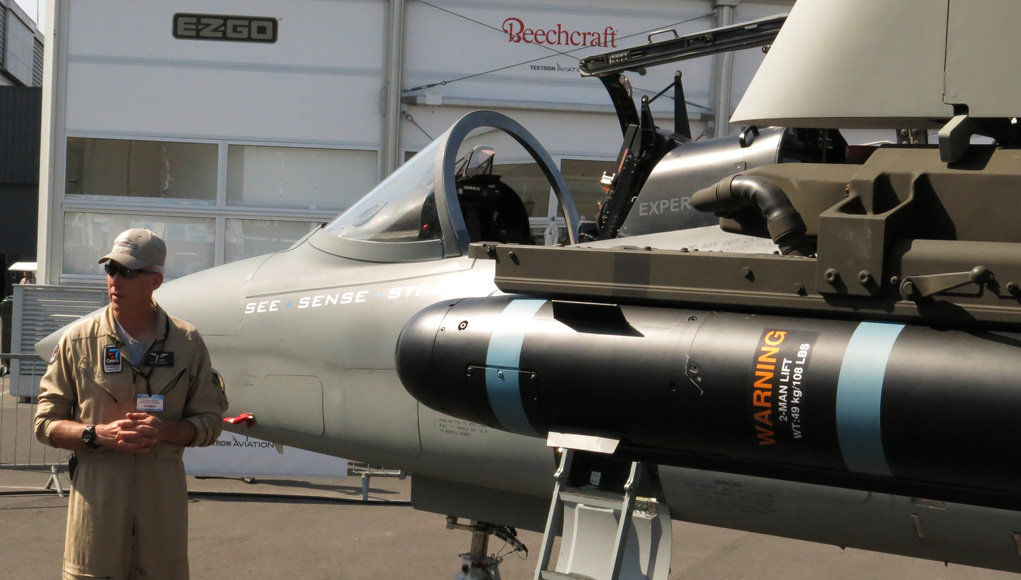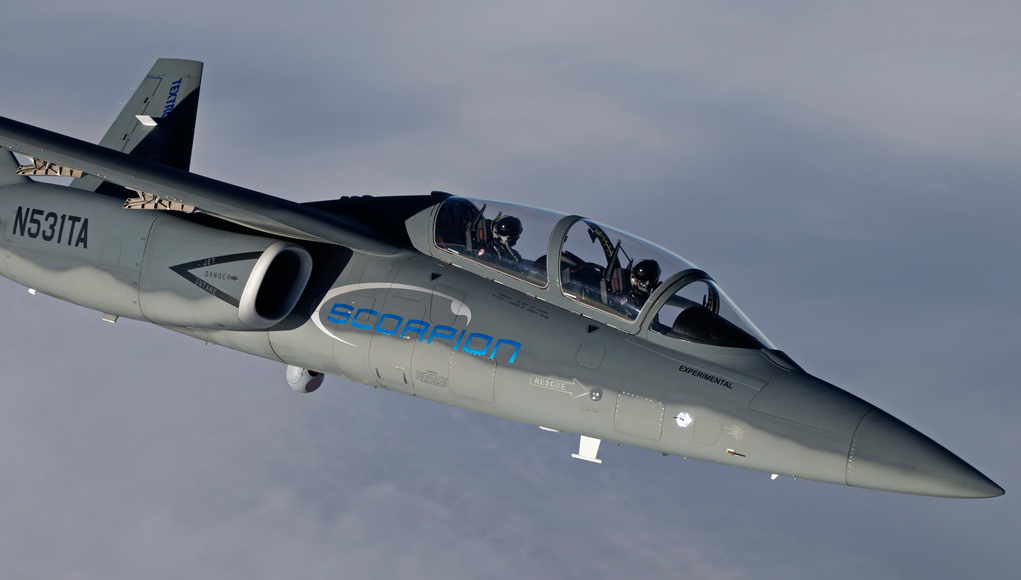
Mission Payloads and Weapons
While the Scorpion is offered as a low-cost platform, it is designed to carry and operate highly sophisticated sensors and weapons. At the Paris Air Show 2015 the aircraft was demonstrated with a Wescam 15 (15 inch) EO payload, but, according to Parker, the aircraft can be configured with much larger payloads, including 25-inch-diameter dome that can perform ISR from stand-off range. The tandem-seat cockpit offers two different layouts – the pilot in the front seat has multiple displays presenting flight data and mission systems. The rear cockpit has a 15” HD large area display (1920x1080p) able to present large, tactical displays that include a digital map and sensor feeds, or information received via datalink.
Textron AirLand has also integrated Thales’ I-Master radar into Scorpion. The addition of the radar into Scorpion’s mission system complements the ISR sensor suite, which already includes a high end EO/IR capability. The integration was completed within just two weeks, the first flight trials took place in late May.
Combined with the EO/IR camera, I-Master adds long-range, wide-area surveillance and target tracking; a single operator operates both payloads simultaneously. The Thales I-Master radar is a compact, lightweight, all-weather tactical surveillance radar, providing world-leading Ground Moving Target Indication (GMTI), Synthetic Aperture Radar (SAR) performance and Maritime Moving Target Indication (MMTI) modes. I-MASTER provides high fidelity imagery for locating and classifying both moving and stationary targets at long standoff ranges over land and sea.
Apart from the ISR suite the aircraft carries a variety of small or large weapons, depending on the mission requirement. For example, close air support missions could benefit from high speed (450 KTAS), self-designation of targets, and weapons carried on four under-wing pylons, which can include G-CLAW, Hellfire, Brimstone or Laser Guided Bomb Unit 12 (GBU-12 – a 500-pound-class weapon). Other optional weapons include the lightweight Raytheon Griffin Missiles and Enhanced Paveway 4 laser-guided bomb, Lockheed Martin’s Hellfire and JAGM, MBDA’s Brimstone Missile and Textron Systems’ G-CLAW. An FN Herstal 50-cal. gun pod is also shown as part of the Scorpion’s sting displayed at the air show. A typical CAS would be flown at a range of 100 nm for mission duration of three hours. On maritime-security or search-and-rescue missions the Scorpion can also carry life rafts. On-station time can extend to 5 hours, at a distance of 150 nm from base.

















